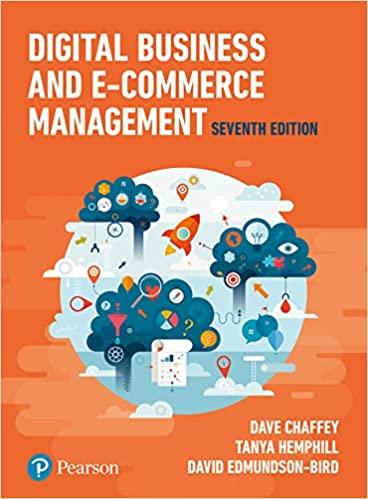Question
The PMI, along with most businesses, organizations, associations, etc., implement standards related to the behaviour expected of its members or employees. Often these are in
The PMI, along with most businesses, organizations, associations, etc., implement standards related to the behaviour expected of its members or employees. Often these are in place as a guide to differentiate between right and wrong, whether actions are appropriate or inappropriate in a given environment. Although the information may appear in different formats or different language from organization to organization, the meaning and intent are often very similar (i.e. that members and employees behave in a way that is acceptable to the business)
Instructions:
- PMI identifies what they call mandatory and aspirational standards. Learn more about what mandatory and aspirational means by watching two segments of a Project Management Foundations:
- Ethics course available on LinkedIn Learning presented by Bog Gagon, called Mandatory ethics (3:08) [https://www.linkedin.com/learning/project-management-foundations-ethics-2019/mandatory-ethics?u=2212217]
- Aspirational ethics (3:19) [https://www.linkedin.com/learning/project-management-foundations-ethics-2019/aspirational-ethics?resume=false&u=2212217]
- This is about the Mandatory Standards. Referring to the Core values only is not acceptable.
- Select 2 (two) related PMI's mandatory standards from the core values in the list below that has the most meaning to you:
(Reading material from textbook)
- Responsibility 2.3.1 and 2.3.2 or 2.3.3, 2.3.4 or 2.3.5
The following definitions are relevant to the Development Approach and Life Cycle Performance Domain:
Deliverable:Any unique and verifiable product, result, or capability to perform a service that is required to be produced to fulfil a process, phase, or project.
Development Approach:A method used to make and evolve the product, service, or result during the project life cycle, such as a predictive, adaptive, or hybrid method.
Cadence:A rhythm of activities conducted throughout the project.
Project Phase:A collection of logically related project activities that culminates in the completion of one or more deliverables.
Project Life Cycle:The series of phases that a project passes through from its start to its completion.
2.3.1 DEVELOPMENT, CADENCE, AND LIFE CYCLE RELATIONSHIP
The type of project deliverable(s) determines how it can be developed. The type of deliverable(s) and the development approach influence the number and cadence for project deliveries. The deliverable approach and the desired delivery cadence determine the project life cycle and its phases.
2.3.2 DELIVERY CADENCE
Delivery cadence refers to the timing and frequency of project deliverables. Projects can have a single delivery, multiple deliveries, or periodic deliveries.
- Single delivery: Projects that have a single delivery deliver at the end of the project. For example, a process reengineering project may not have any deliveries until near the end of the project when the new process is rolled out.
- Multiple deliveries: Some projects have multiple deliveries. A project may have multiple components that are delivered at different times throughout the project. A project to develop a new drug may have multiple deliveries, such as preclinical submissions, Phase 1 trial results, Phase 2 trial results, Phase 3 trial results, registration, and then launch. In this example, the deliveries are sequential. Some projects have deliveries that are developed separately rather than sequentially, such as a project to update building security. Deliveries may include physical barriers to entry, new badges, new key code pads, and so forth. Each of these is a separate delivery, but they do not need to come in a specific order. All of the deliveries are concluded before the project is considered to be completed.
- Periodic deliveries: Periodic deliveries are like multiple deliveries, but they are on a fixed delivery schedule, such as monthly or bimonthly. A new software application may have internal deliveries every two weeks, and then periodically release the deliveries into the market.
Another delivery option is called continuous delivery. Continuous delivery is the practice of delivering feature increments immediately to customers, often through the use of small batches of work and automation technology. Continuous delivery can be used for digital products.
From the product management perspective, the emphasis is on delivering benefits and value throughout the product life cycle. Similar to a project, there are aspects that are development oriented. However, similar to a program, there can be many development cycles as well as maintenance activities. This type of undertaking works better with project teams that are stable and remain intact. Because the project teams are focused on one product, they can apply learning about the product, the stakeholders, and the market. This allows the team to respond to market trends and stay focused on value delivery. This practice is included in several approaches such as DevOps, #noprojects and Continuous Digital, for example.
2.3.3 DEVELOPMENT APPROACHES
A development approach is the means used to make and evolve the product, service, or result during the project life cycle. There are different development approaches, and different industries may use different terms to refer to development approaches. Three commonly used approaches are predictive, hybrid, and adaptive. As shown in Figure 2-7, these approaches are often viewed as a spectrum, from the predictive approach on one end of the spectrum, to the adaptive on the other end.
Figure 2-7.






Step by Step Solution
There are 3 Steps involved in it
Step: 1

Get Instant Access to Expert-Tailored Solutions
See step-by-step solutions with expert insights and AI powered tools for academic success
Step: 2

Step: 3

Ace Your Homework with AI
Get the answers you need in no time with our AI-driven, step-by-step assistance
Get Started


